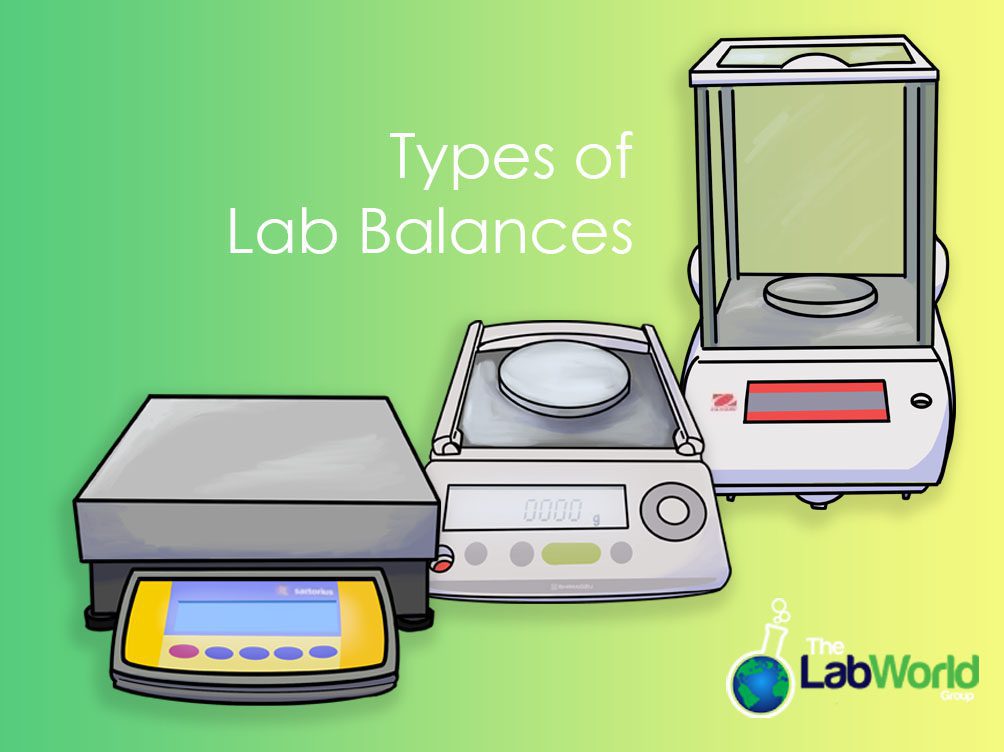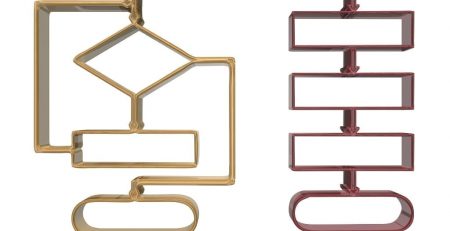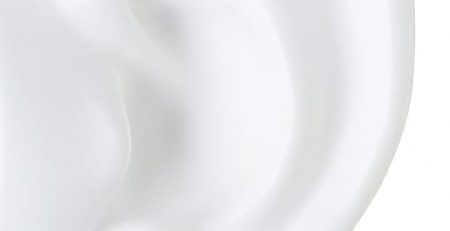
Laboratory Balance Types
Amanda2022-10-21T22:29:41+00:00Balances are used in just about every lab worldwide. These staples fill in information about an object, allow for proper portioning of compounds, reagents, and samples, and can tell you about the before and after of an experiment. Types of laboratory balances can be broken down into subcategories, each with attributes that are ideal for different tasks and needs when it comes to weighing. Knowing what you’re going to weigh determines the type you should be looking for.
Top Loading Balances and Precision Balances
Starting with the most general lab workhorse, we have the top loading balance. This lab scale can be compact and kept by the user’s side or can measure large weights on an ample platform set on the floor. A top-loading balance is less precise than an analytical balance, with readability from 0.1g to the milligram decimal point. Around 1mg these are in the precision balance range. However, what they may lack in readability, they make up for in speed. These lab scales usually return a reading in seconds and without a draft shield in the way, they load and unload quickly, for a zippy workflow. This lab staple is ideal for tasks where a high degree of accuracy isn’t necessary, and they have features like dynamic weighing for objects that move like live animals. Some precision balances do feature a draft shield and have filters to lessen the effects of vibrations and temperature changes.
Analytical Balances
Analytical Balances like the Analytical Balance 214B2 have readability of 1mg or better, up to 4 decimal places. Being so accurate means that even a slight variation in air current or dust can impact a reading therefore these are completely enclosed. This level of accuracy and precision make this ideal for areas like chemistry and chemical analysis. Precision Balances and Analytical Balances are Semi-Analytical with readability to 3 decimal places (0.001g), these are slightly less sensitive to temperature changes, or drift, while still providing more accuracy. Their accuracy is ideal for arenas that rely on quantitative chemical analysis such as pharmaceutical, plastics, manufacturing, calibration labs, and the food industry.
Semi Microbalances, Micro Balances, And Ultra Microbalances
The smallest samples are measured on microbalances with capacities topping out at around 6g, with readability down 0.001mg or 0.01mg, or to µg range with an ultra micro balance. Microbalance and Semi microbalances employ vibration isolating systems and are highly sensitive to environmental shifts so are usually used within a hood or enclosure. These dynamos can measure objects relatively small in mass with a high degree of accuracy, and therefore are ideal for areas such as quality assurance or product testing, and checking the uniformity of critical parts.
Moisture Balances and Moisture Analyzers
Moisture analyzers are special lab scales used to determine a sample’s moisture content. This compact benchtop instrument is much faster than drying items out in a big bulky incubator or oven and then weighing that sample after. Instead, small quantities can be processed all within the same instrument. These specialty lab balances use a thermogravimetric principle, or loss on drying, combining a method of heating and drying such as a halogen or infrared lamp and a balance with milligram readability. Using a moisture balance can dramatically shorten a workflow, taking a moisture determination test down to a few minutes instead of hours.
Single Range, Dual Range, and Delta Range Balances
Lab Balances can also feature movable weighing ranges. An everyday use balance will have a single straightforward capacity, where you have up to a certain number of grams or kilograms and the readability is the same over that range. There are however dual range balances for situations where a more refined measurement is needed. These weight ranges are also fixed but the fine range allows 10 times the readability of the larger coarse range, letting users get more granular with the same instrument.
Delta range balances take this a step further allowing users to move the fine weighing range, still covering a smaller section of the coarse range. Other options include multiple range balances with different maximum capacities and readabilities in the same instrument, and multiple interval ranges that divides a single weighing range into sections with their readability.
Common Balance and Scale Terms
Lab Balances and specification charts use common terminology to help explain features and parameters. First, the names scale and balance seem interchangeable, but they point to how the measurement is shown. The term balance usually applies when reading is focused to the right of a decimal focusing on the accuracy of the measurement. A scale will focus on the left of the decimal point, with higher capacity being the main reading need.
Readability (accuracy) and Repeatability (Precision)
Speaking of accuracy and precision, the layman may use these phrases to mean the same thing, however, they are referring to two different concepts used to think about the error. Accuracy is how close a measurement is to the true value. In balance, this looks like higher readabilities and decimal points. Precision however is independent of accuracy, referring to how close measurements of the same item are to each other, or repeatability. You can be precise, coming in at the same number again and again, without being accurate. It is important that a balance not only be accurate but also precise.
Sensitivity Drift
Over time a balance can show a progressive shift up or down in the reading, resulting in an unstable readout. This can be caused by environmental factors such as an unlevel balance, temperature fluctuations, static electricity, or radio frequency interference. Balance manufacturers tend to include how sensitive the model is to these factors, and will also include an acceptable temperature range for operation.
Other terms include Linearity, referring to a balance’s ability to deliver the same sensitivity across the weighing range, two weights measured independently should add up to the same total when weighed together. Below weighing is another feature you may see listed, this allows users to measure items that may otherwise not fit on the platform. These items may have high or low temperatures or are magnetized and would interfere with the operation of the weigh cell.
Final thoughts
Understanding what you’re going to weigh is the first step when it comes to selecting a lab balance. From there knowing how accurate you need to be, and how flexible that range needs to be can help you focus. It should be noted that with higher accuracy and additional features, the cost of these instruments can go up.
Buying a gently used and verified lab balance is a great way to get more of the features you need while still hanging onto some of your investment. Every balance that comes through our doors is checked with our in-house weights and verified for accuracy. If you need help finding the right balance for your tasks, give us a call, we are here to help!













